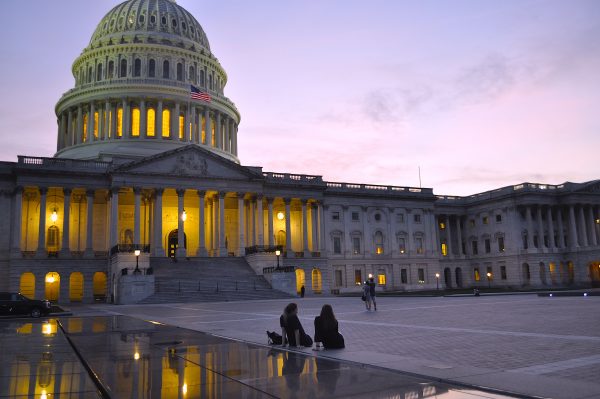
The U.S. House on Friday passed an enormous infrastructure bill, sending it to President Biden for his signature. All three members of Alaska’s Republican delegation to Congress voted for the $1.2 trillion bill — reflecting how important the bill is to the 49th state.
In federal highway funding alone, the legislation will send Alaska $3.5 billion. That’s just the start.
“I think it’s very big for Alaska. Very far reaching,” said Garrett Boyle, federal co-chair of the Denali Commission, whose mission is to improve Alaska’s infrastructure.
Boyle took note of the large amount of money for ports, and the bill’s emphasis on broadband internet. Alaska will get at least $100 million from one broadband program in the bill. Also, there’s a substantial sum for water and sewer projects.
“One thing I am super excited about that hasn’t been getting a lot of press is $3.5 billion for the Indian Health Service to build sanitation facilities,” Boyle said. “So I think we might finally see a significant advance in building out water and sewer projects in villages that have never had piped water before.”
The bill has $75 million for the Denali Commission too, in addition to its regular federal funds.
“That’s about six times what we’ve been getting in the annual appropriation process in recent years. So it’s a pretty significant expansion of funding,” Boyle said.
The bill was largely negotiated last summer by a group of 10 senators — five Democrats and five Republicans, including Sen. Lisa Murkowski. The bill doesn’t have a lot of direct earmarks to any particular state, but read between the lines and you can see Murkowski’s work, particularly when it comes to ferries.
The bill, for instance, creates a new program for “essential ferry service” for rural areas.
The bill doesn’t say that the Alaska Marine Highway System is the beneficiary of that $1 billion program, but consider the eligibility criteria: The ferry has to serve at least two rural communities that are at least 50 miles apart. Most of the country’s 200 ferry systems travel much shorter distances. Boyle, who was a top Murkowski aide until August, said that provision was the senator’s doing.
“I’m biased, because I was still working for her at the time, but I would say she’s 100% responsible for that,” Boyle said.
The bill also has $250 million for a pilot project to buy ferries running on electricity or some other low carbon emission fuel. Again, the Alaska ferry service isn’t specified by name, but the bill says at least one grant must be “for a ferry service that serves the state with the largest number of Marine Highway System miles.”
No other state comes close. Alaska’s ferry system is relatively small in terms of passengers served, but it accounts for more than half of all the ferry-route miles in the United States.
[Sign up for Alaska Public Media’s daily newsletter to get our top stories delivered to your inbox.]
The infrastructure bill has a lot of the Biden administration’s agenda, including renewable energy programs and improvements to the electrical grid that will support more green energy. There’s more in the so-called social infrastructure bill, which House Democrats are still working to pass.
Mike Navarre, a former state commerce commissioner and former Kenai Peninsula Borough mayor, has been talking up the infrastructure bill on a radio show he hosts on KSRM.
“This is good for America, and it’s great for Alaska,” he said.
His mostly conservative audience appreciates the benefit of infrastructure spending, by and large, he said. Even though a lot of the money Alaska will get is aimed at improving rural infrastructure, Navarre said the impact will ripple through the whole state.
“Anytime there’s spending in an economy, the urban areas are the areas that benefit the most, because that’s where the businesses are located. That’s where the freight comes through etc., etc. So everybody in Alaska will benefit,” he said.
Advocates of the bill have claimed it’s fully paid for, but that’s a matter of interpretation. The Congressional Budget Office says it will add $256 billion to the deficit over the next decade.
Liz Ruskin is the Washington, D.C., correspondent at Alaska Public Media. Reach her at lruskin@alaskapublic.org. Read more about Liz here.





